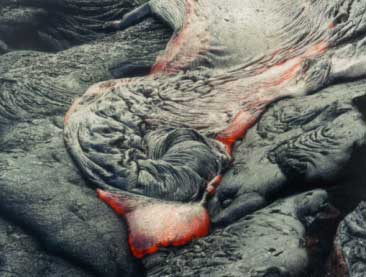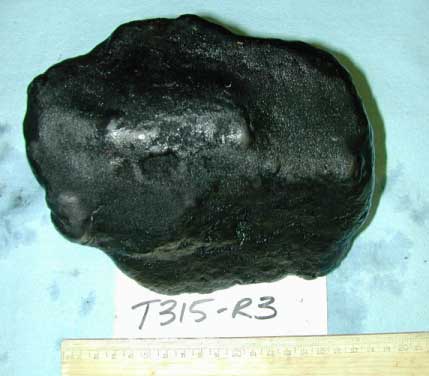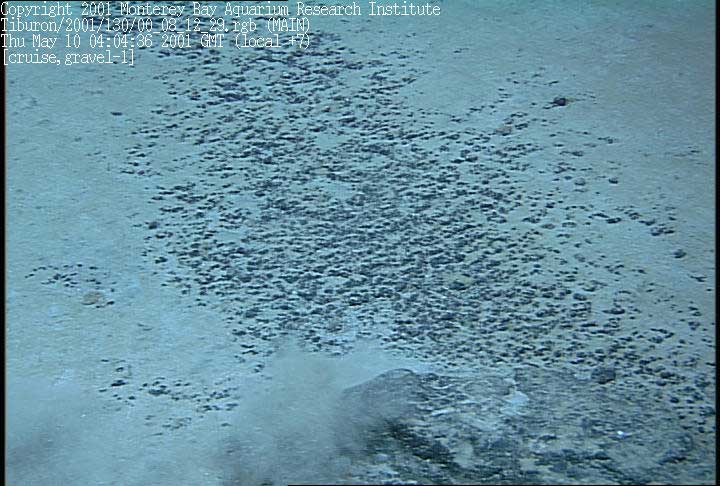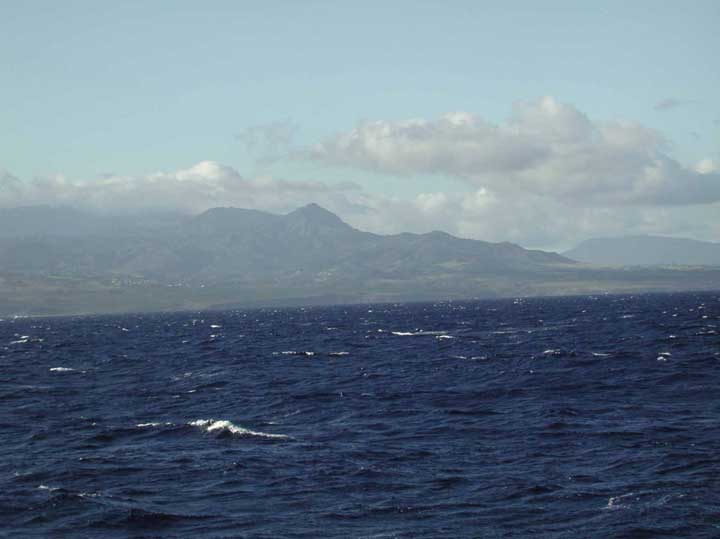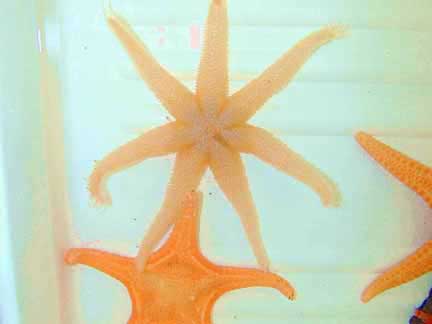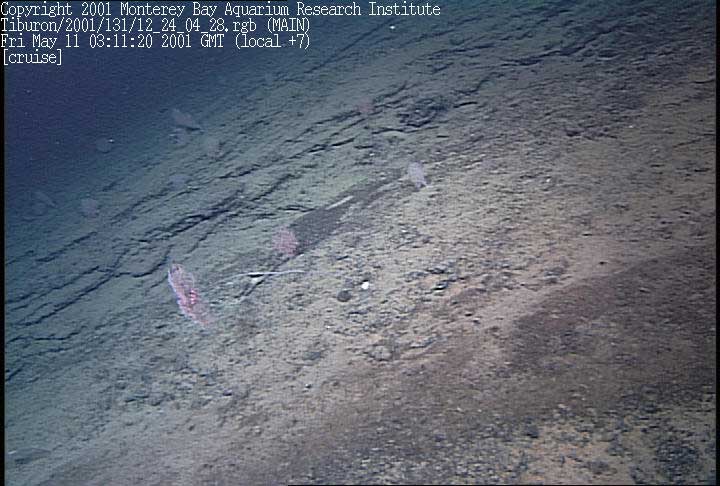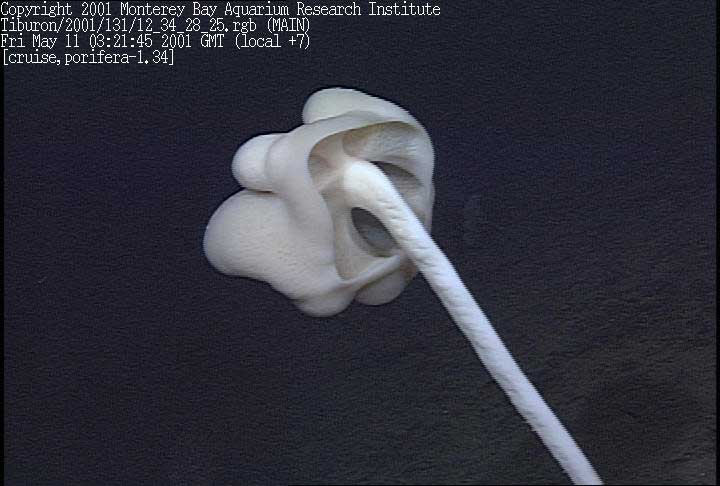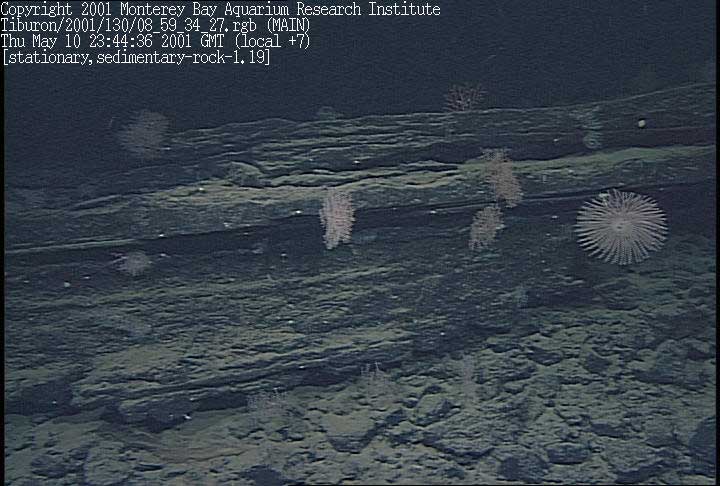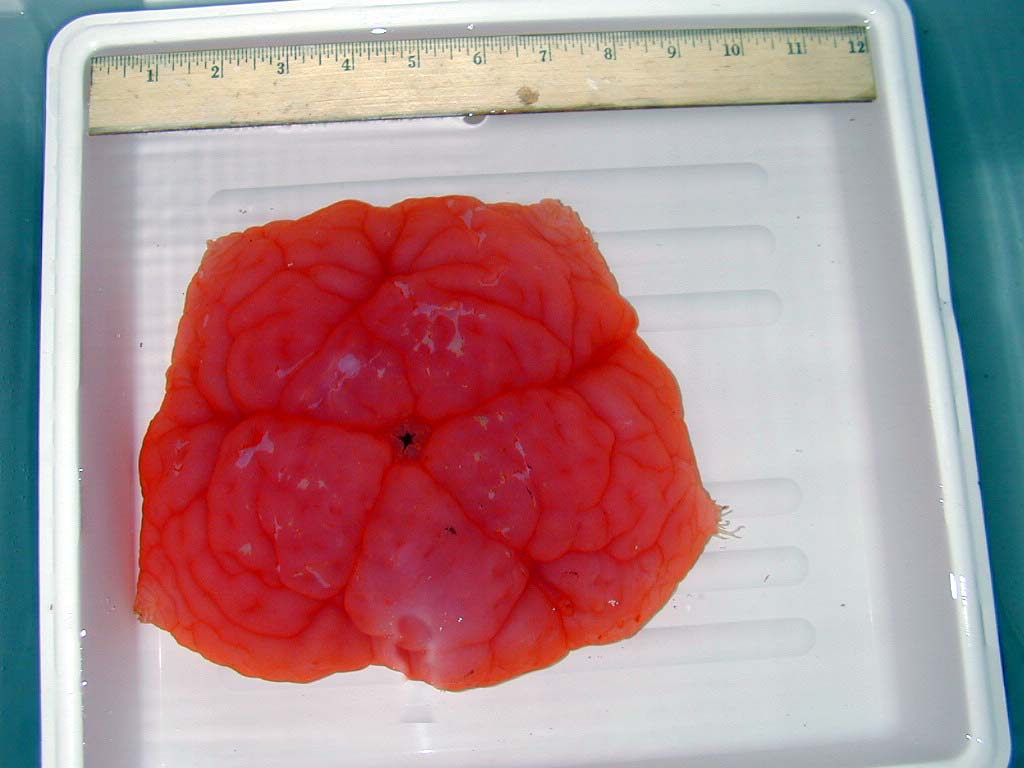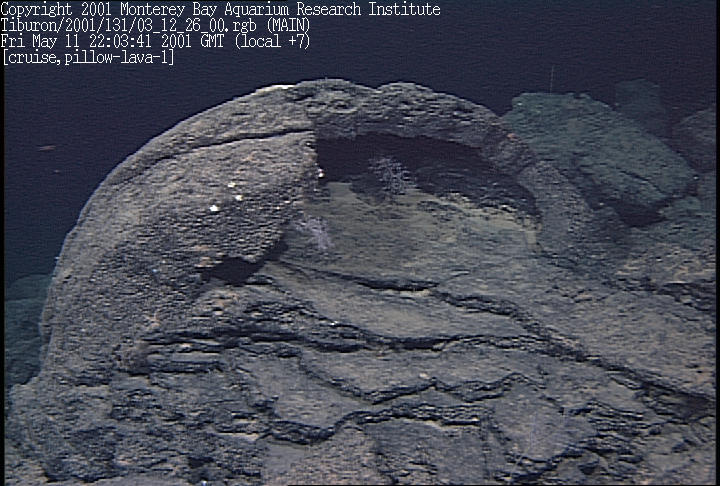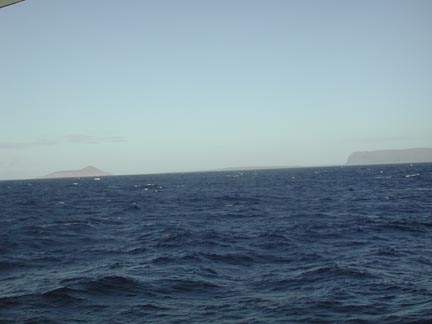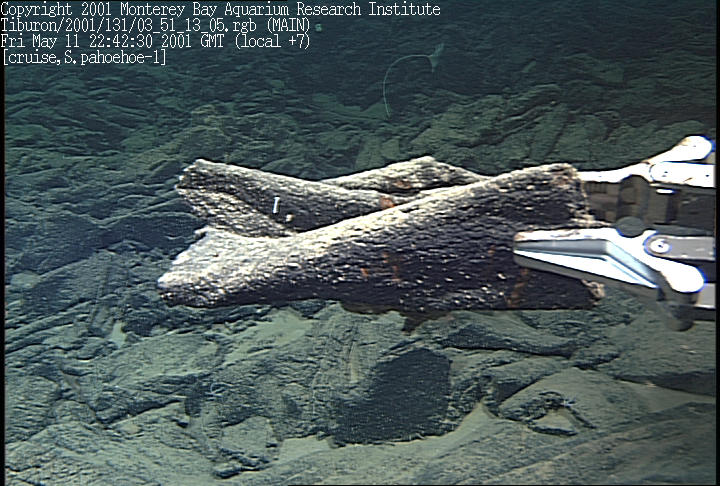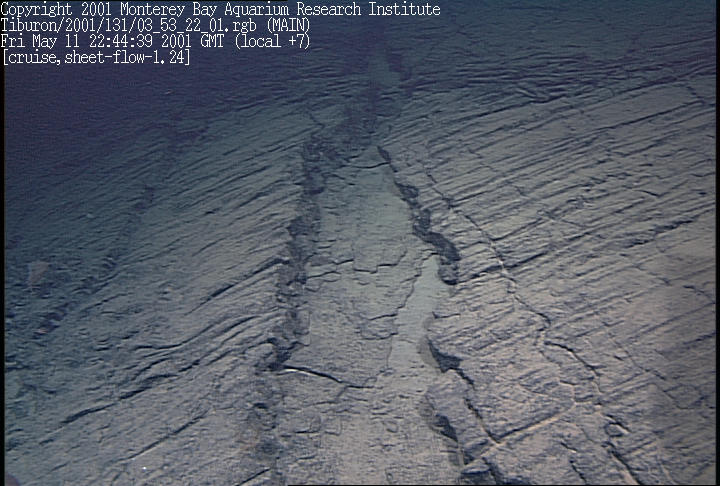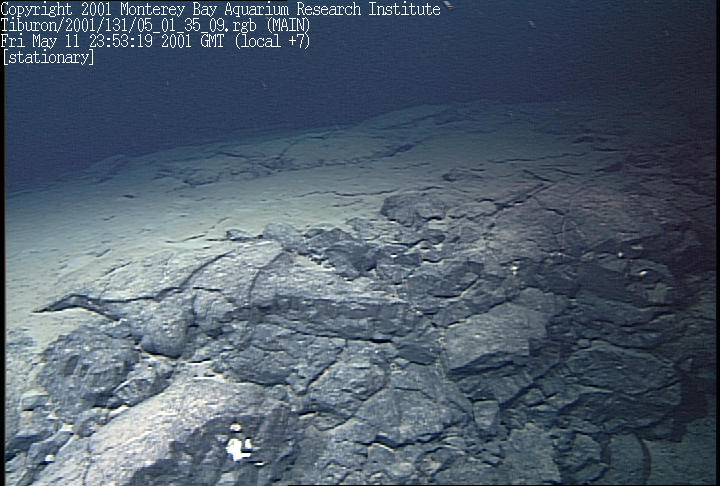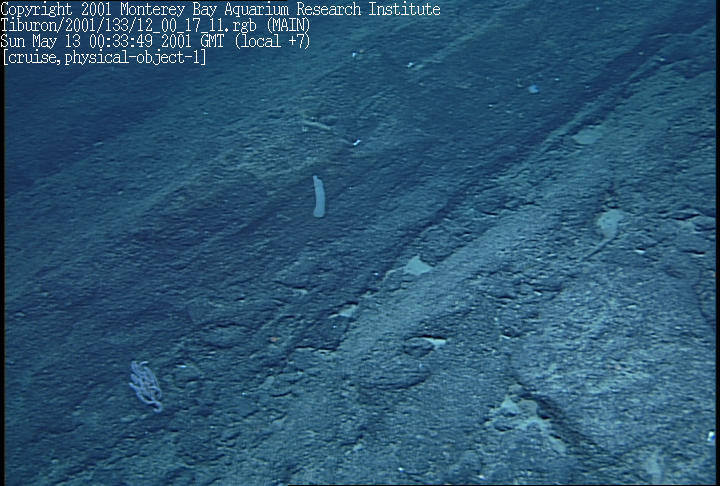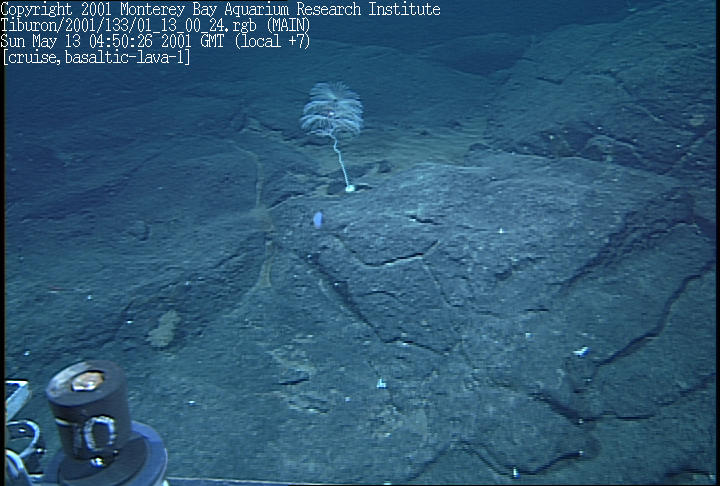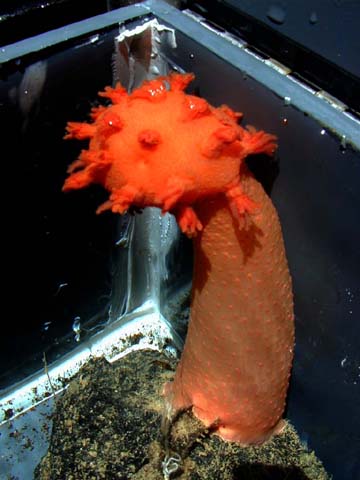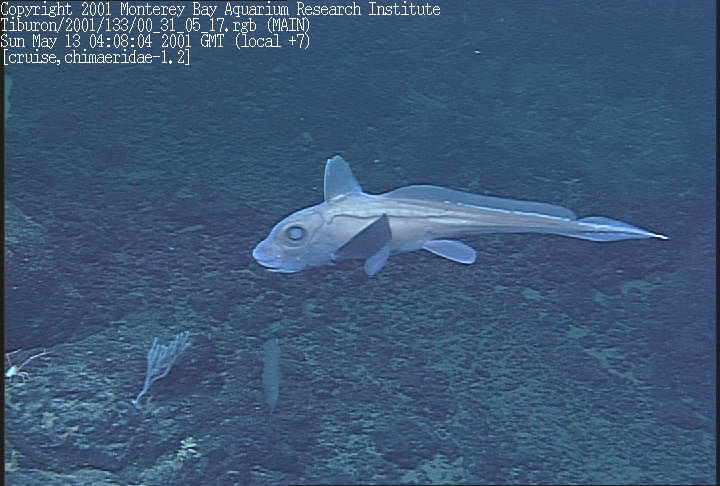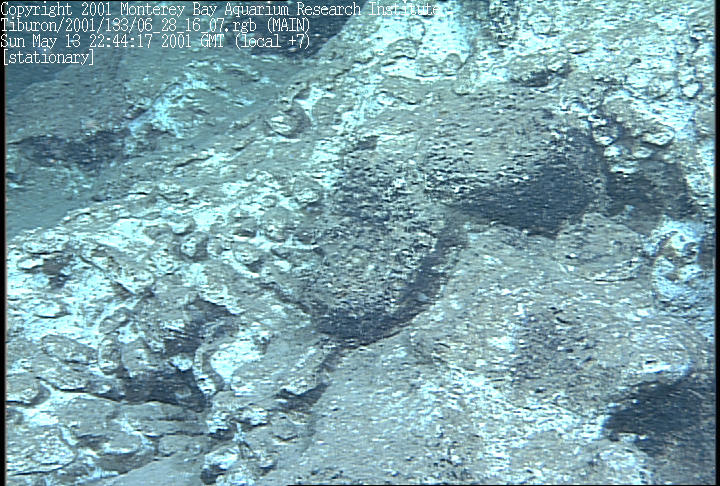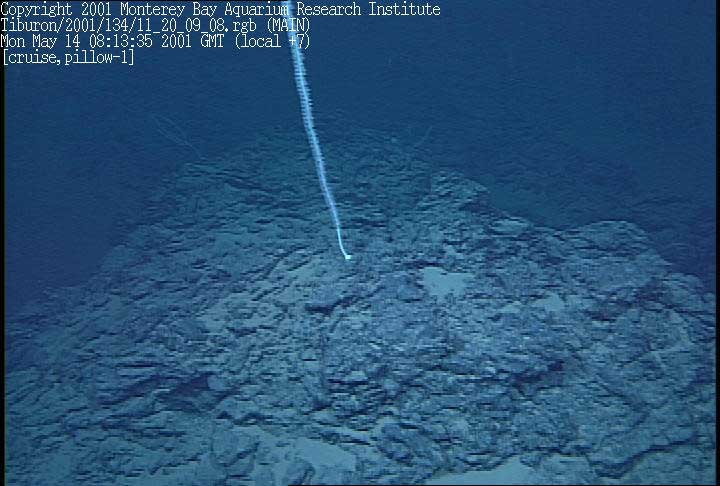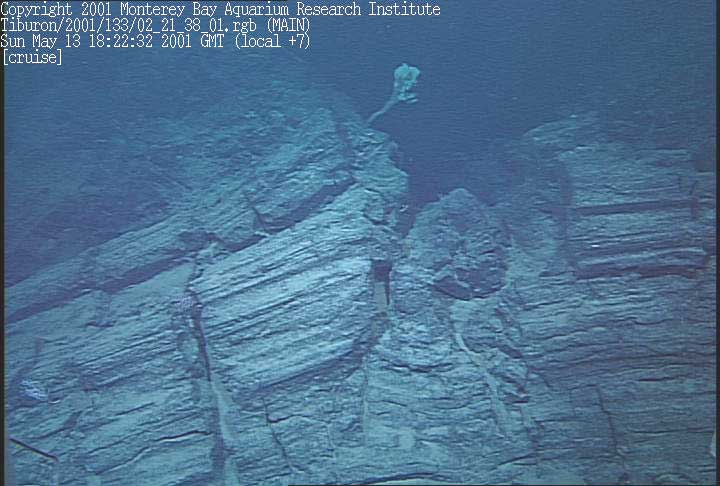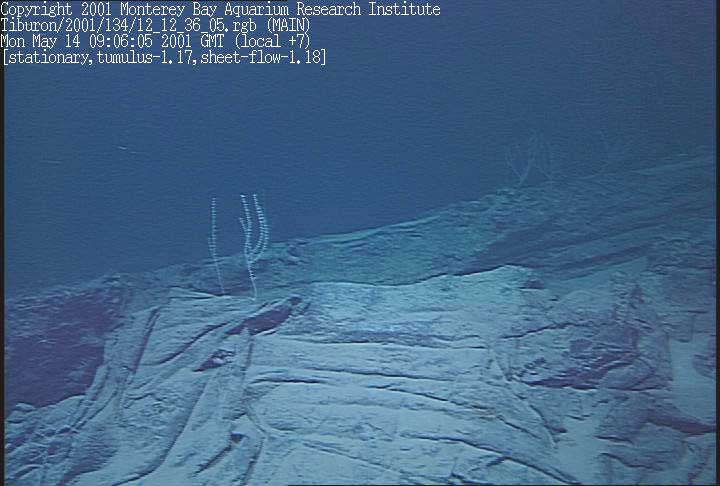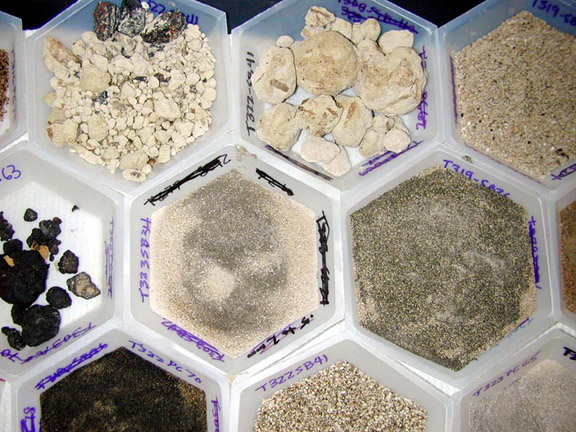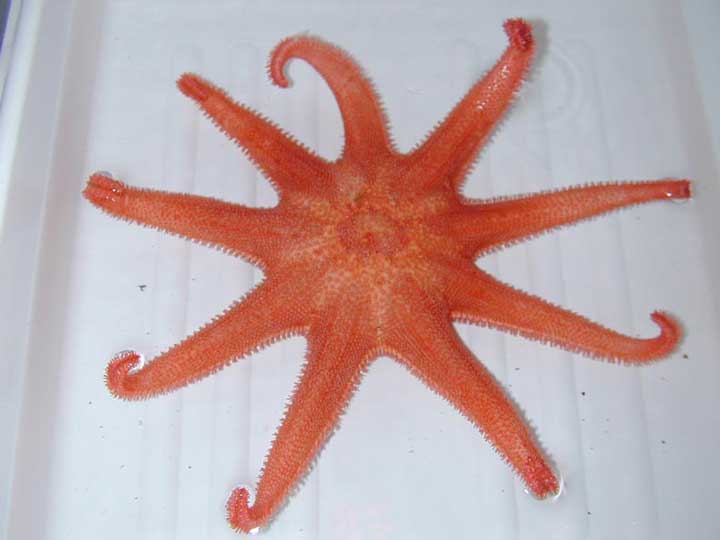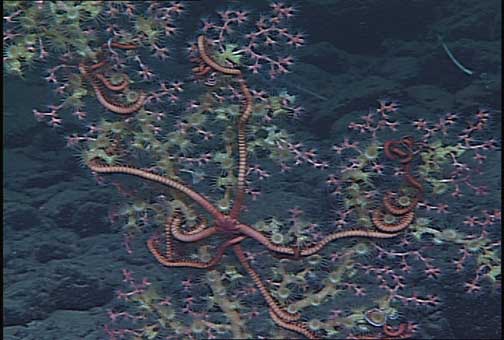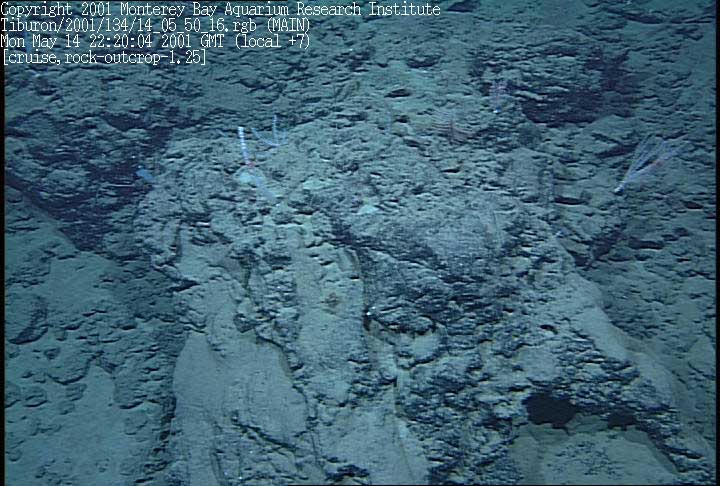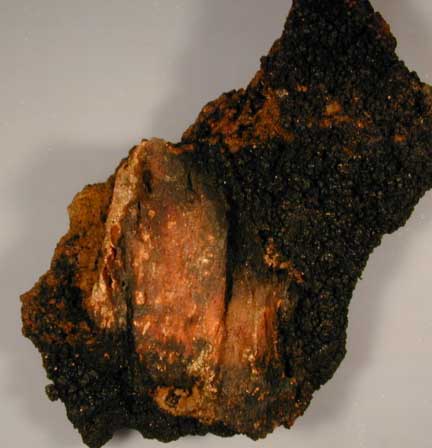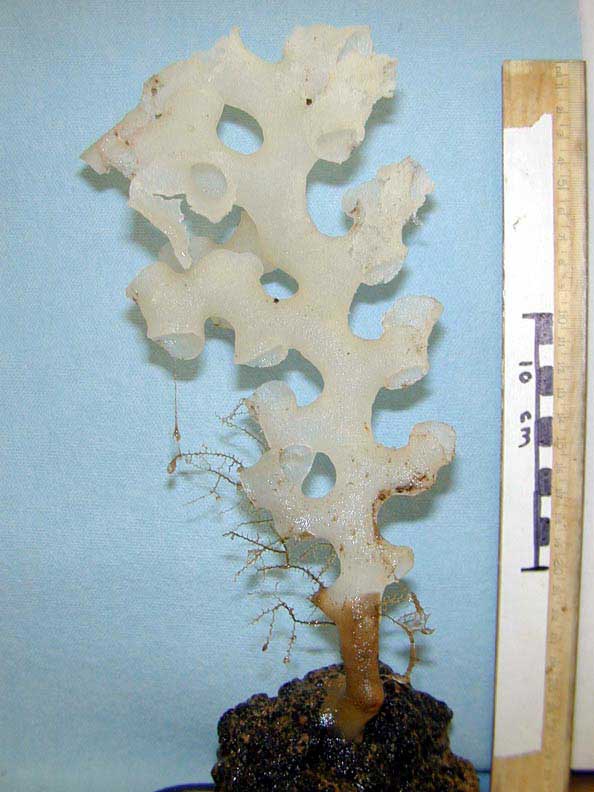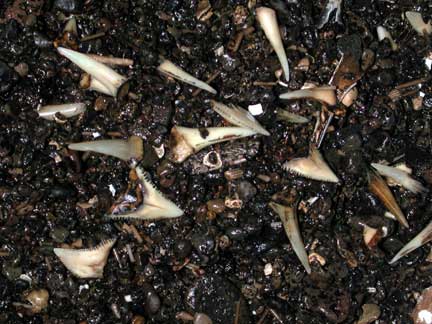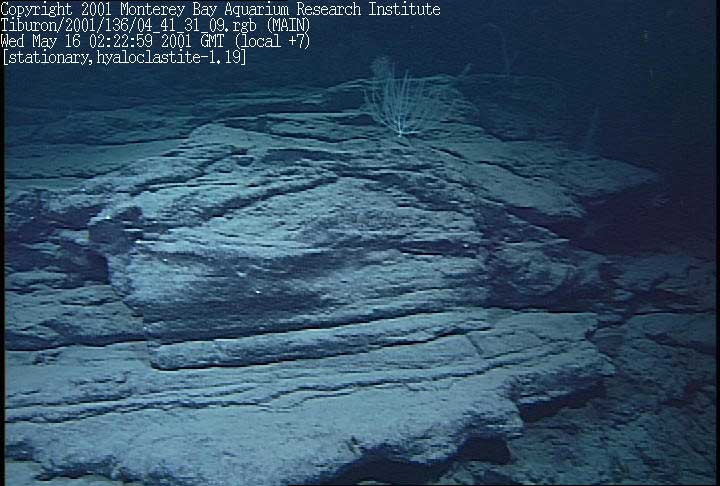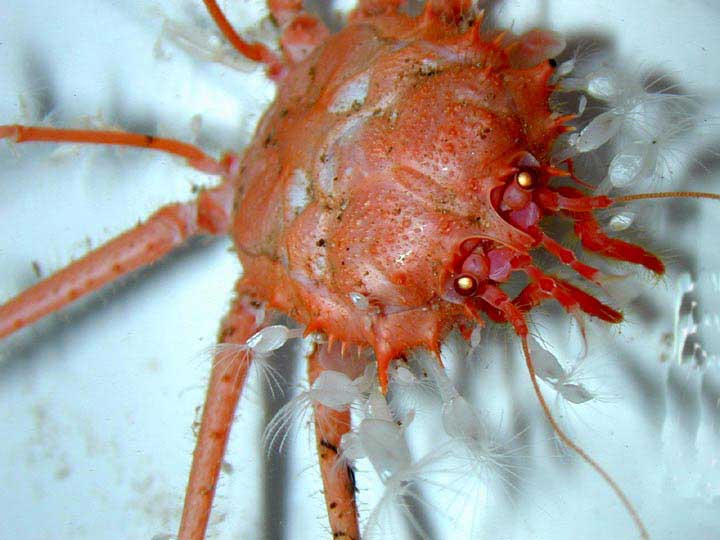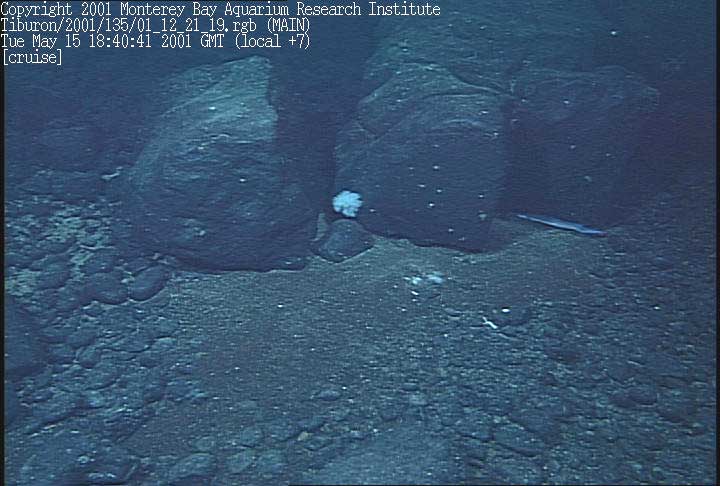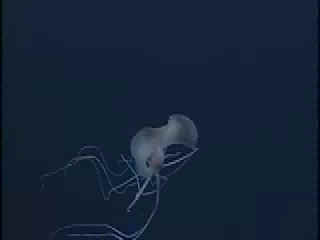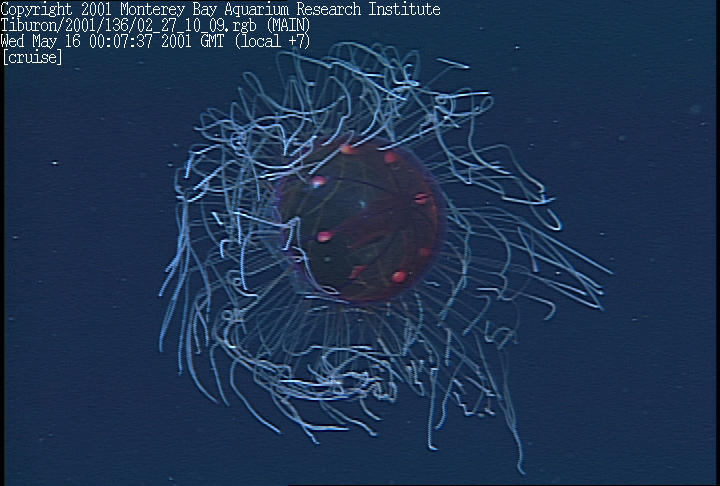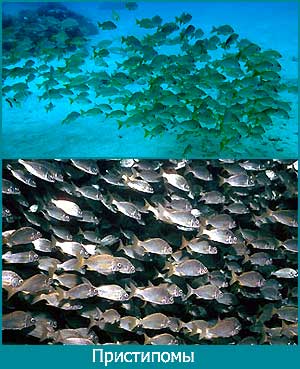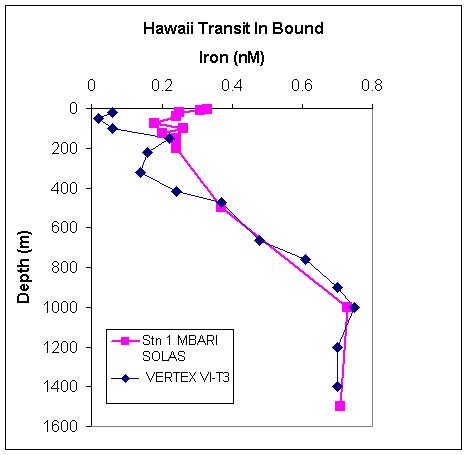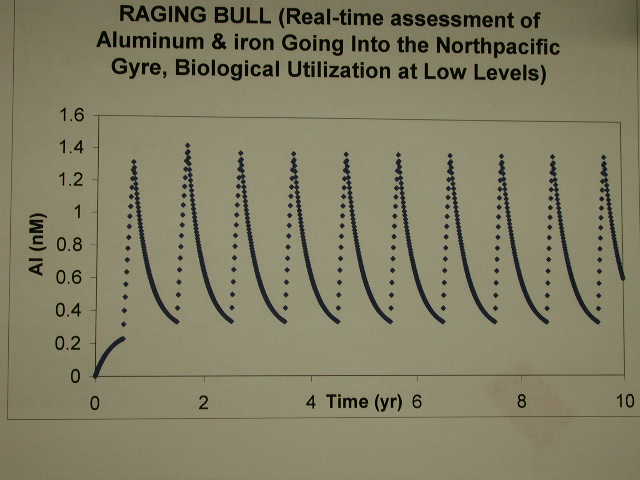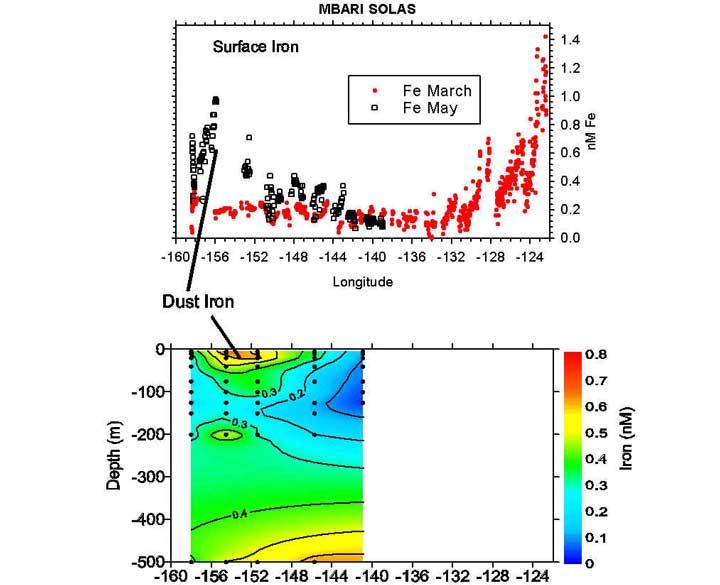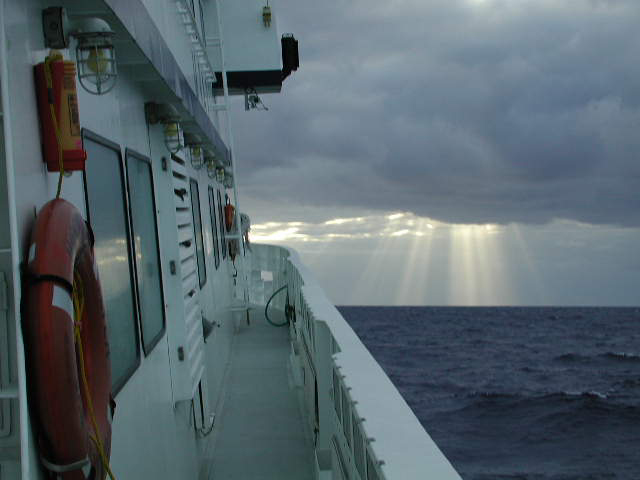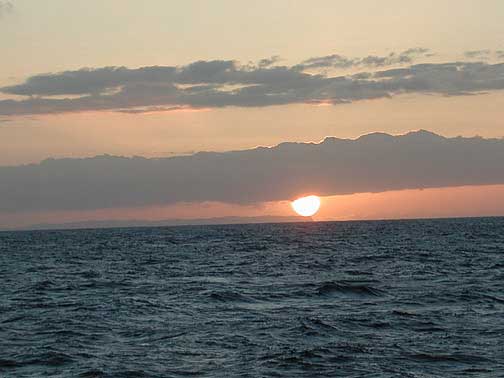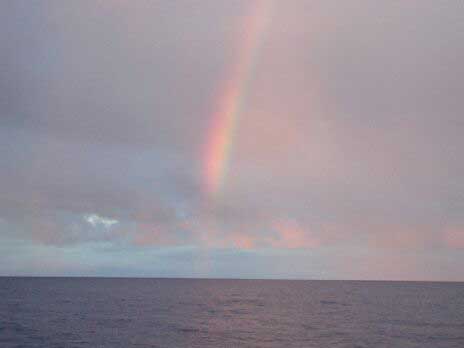 | Havaii |
This pahoehoe lava surface is smooth and often ropy in texture. We watched this lobe''s crust spiral into this interesting swirl-http://www.mbari.org/expeditions/Hawaii/Leg4/May9.htm |
This sample is basaltic lava with a thick manganese oxide coating. Because coatings of manganese oxide usually take a long time to accumulate, this rock is probably very old-http://www.mbari.org/expeditions/Hawaii/Leg4/May9.htm |
A basaltic-lava boulder with a trail of gravel behind it shows the orientation of strong bottom currents in the area -http://www.mbari.org/expeditions/Hawaii/Leg4/May9.htm |
the southern end of Kauai, offered spectacular views (much better than the photograph!). Photo by N. Jacobsen -http://www.mbari.org/expeditions/Hawaii/Leg4/May10.htm |
Sea stars collected for the Monterey Bay Aquarium. Photo by Ed Seidel --http://www.mbari.org/expeditions/Hawaii/Leg4/May10.htm |
Steeply dipping beds of volcaniclastic rocks -http://www.mbari.org/expeditions/Hawaii/Leg4/May10.htm |
Stalked sponge |
These thick layers of volcanic sandstone are home to numerous gorgonians |
Favorite animal of the day, a very unusual, fleshy pink sea star-http://www.mbari.org/expeditions/Hawaii/Leg4/May11.htm |
A lava pillow that has drained and shattered open to show the layers of lava that flowed through the tube. Some gorgonians are living inside-http://www.mbari.org/expeditions/Hawaii/Leg4/May11.htm |
View from our current dive location: Lehua, the small cone shaped island on the left and part of the Island of Niihau on the right-http://www.mbari.org/expeditions/Hawaii/Leg4/May11.htm |
is a folded pahoehoe with about two centimeters of glass in places-http://www.mbari.org/expeditions/Hawaii/Leg4/May11.htm |
Tilted slab of a striated sheet flow, which presumably cracked as the sheet inflated and deflated from the pressure of the molten lava underneath -http://www.mbari.org/expeditions/Hawaii/Leg4/May11.htm |
Cliff at edge of ridge, which drops down into the center of the collapsed lava pond and exposes what had been a single, massive, thick, ponded lava flow--http://www.mbari.org/expeditions/Hawaii/Leg4/May11.htm |
Steeply dipping, eroded, thickly bedded volcaniclastic rocks (volcani = erupted from a volcano, clastic = broken)-http://www.mbari.org/expeditions/Hawaii/leg4/may12images/12_00_17_11.jpg |
Smoothly eroded surface of a massive ''a''a lava flow at least 14 meters thick, which is interpreted to have once been at the shoreline. A gorgonian (Iridogorgia spp.) now calls the lava home -http://www.mbari.org/expeditions/Hawaii/Leg4/May12.htm |
Anthomastus, a genus which also lives in Monterey Bay- http://www.mbari.org/expeditions/Hawaii/Leg4/May12.htm |
This captivating chimaerid (Hydrolagus purpurescens), a primitive relative of sharks and rays, was seen yesterday at about 850 meters off Niihau-http://www.mbari.org/expeditions/Hawaii/Leg4/May13.htm |
Fingers of corals estimated to be around five million years old eroding out of the surrounding, lighter-colored, coralline algae and carbonate sand of a patch reef. The corals we found on Leg 2, in comparison, were only a few tens to hundreds of thousands of years old-http://www.mbari.org/expeditions/Hawaii/Leg4/May13.htm |
Hackly flow, also called jumbled sheet flow, and a gorgonian. The lava surface has been torn up by the surging of a very fast lava flow that poured from the vent. The surface was disturbed into plates, and the plates got shattered, bent, and pushed up against each other, creating a disorganized, wild terrain. (Imagine putting lava in a blender.) Because the flow was so fast and hot, the plates are an integral part of the surface rather than rubble. The scale of this type of flow could be 1-2 meters relief and tens of meters wide. A hackly flow represents an end member in a series of submarine lava flow surface shapes: from bulbous pillows, to lobate pillows, to sheet flows (striated and ropy), to hackly flows-http://www.mbari.org/expeditions/Hawaii/Leg4/May13.htm |
Looking down the axis of a tumulus on the summit of the first cone of our dives today. The pressure of the lava flowing in a tube underneath broke and pushed up the chilled slabs of the sheet flow. The flow originally would have been horizontal, but the slabs became almost vertical in places-http://www.mbari.org/expeditions/Hawaii/Leg4/May13.htm |
Another folded, ropy sheet flow, broken and upended to become a tumulus -http://www.mbari.org/expeditions/Hawaii/Leg4/May13.htm |
A beehive of geological sediment and gravel samples from our most recent dives. Photo by Ed Seidel-http://www.mbari.org/expeditions/Hawaii/Leg4/May14.htm |
An unidentified species of sea star collected today at 1950 meters-http://www.mbari.org/expeditions/Hawaii/Leg4/May14.htm |
Gold coral and basket star-http://www.mbari.org/expeditions/Hawaii/Leg4/May14.htm |
Mound of what appears to be spatter from a volcanic eruption. The molten rock splatted into the mound, then began to remobilize and form drips before it completely chilled-http://www.mbari.org/expeditions/Hawaii/Leg4/May14.htm |
This sample has some pieces of spatter on its surface. The textures just to the left of the sample''s center are striated and folded, unlike the rest of the rock''s surface -http://www.mbari.org/expeditions/Hawaii/Leg4/May14.htm |
An unidentified sponge (I originally thought it might be a bryozoan, but after looking at a sample under the scope saw that it was indeed a sponge) collected 2072 meters-http://www.mbari.org/expeditions/Hawaii/Leg4/May14.htm |
Numerous shark teeth were recovered in this unique sand sample north of Oahu this morning. sandteeth_2.jpg (njs)-http://www.mbari.org/expeditions/Hawaii/Leg4/May15.htm |
Bedded hyaloclastite and volcanic breccia on the Waianae landslide-http://www.mbari.org/expeditions/Hawaii/Leg4/May15.htm |
This crab was also collected this morning north of Oahu. When it was recovered, Ed found that it was covered with barnacles which were feeding with their feathery legs extended. T325-A1head.jpg (Ed-http://www.mbari.org/expeditions/Hawaii/Leg4/May15.htm |
Beach deposits now at about 700 meters depth, where we were hoping to find evidence of active volcanism. These sands were loaded with shark teeth, unlike any of the other sediments we have sampled on this expedition-http://www.mbari.org/expeditions/Hawaii/Leg4/May15.htm |
http://www.mbari.org/expeditions/Hawaii/Leg4/May16.htm |
A beautiful hydromedusa that we''ve seen in several areas around Hawaii -http://www.mbari.org/expeditions/Hawaii/Leg4/May18.htm |
|
Iron Profile. The first vertical iron profile from this cruise (in pink). Compare the surface iron levels with measurements taken in September during a low dust period-http://www.mbari.org/expeditions/Hawaii/Leg5/May25.htm |
RAGING BULL (Real-time assessment of Aluminum & iron Going Into the Northpacific Gyre, Biological Utilization at Low Levels) model developed during this expedition -http://www.mbari.org/expeditions/Hawaii/Leg5/May27.htm |
A plot of the results obtained for iron, so far, that clearly shows the impact of dust falling from above on iron chemistry-http://www.mbari.org/expeditions/Hawaii/Leg5/May29.htm |
Ken''s Ansel Adams moment -MBARI |
|
What we hope contains some Asian dust-http://www.mbari.org/expeditions/Hawaii/Leg5/May23.htm |
